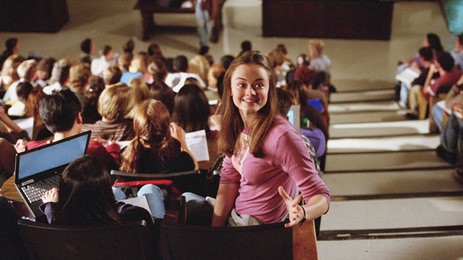Harvard Economist Can’t Tell Us Why Harvard Costs So Much

“What should we do about the high cost of higher education?” asks N. Gregory Mankiw, before concluding, several hundred words later, with “there are no easy answers here.” Buddy, no one paid you to come up with easy answers. If answers were easy to come by, we wouldn’t need to hire a Harvard economics professor to opine in the paper of record.
I’m getting frustrated with this trend of establishment folks taking up valuable intellectual real estate to imply that they have something novel and important to contribute — and then, instead, tell us Not Much. (See also: Free Tuition Is A Bad Idea, Insists President of Private College.) My three-year-old does this too: “Mom. Mom! MOM!” “Yes?” “I like you / juice / fire-fighters.”
Except she doesn’t get paid $2 a word.
Mankiw gives three reasons for why college tuition is so much higher than it used to be: 1) something called “Baumol’s disease,” which, indeed, does sound like something that a person would be overcharged for in the ER; 2) the necessarily high costs of hiring skilled professionals; 3) price discrimination.
Let’s break it down.
Employers in [stagnant] sectors face a problem: they also need to increase their wages so workers don’t defect. The result is that, although output per worker rises only slowly or not at all, wages go up as fast as they do in the rest of the economy. As the costs of production in stagnant sectors rise, firms are forced to raise prices. These increases are faster than those in sectors where productivity is improving, and faster than inflation (which blends together all the prices in the economy). So prices of goods from stagnant sectors must rise in real terms. Hence “cost disease”.
The disease is most virulent in industries where standardisation and automation are hard. The best examples are goods tailored to meet customer-specific demands, such as bespoke suits and haircuts. But Mr Baumol focuses on industries in which the cost disease is rife because human interaction is important, such as health care, education and the performing arts.
Fair enough, right? Except wages haven’t been going up, not really. Sure, salaries are lush for the top 10 profs in the field, who are, not surprisingly, dudes who teach in top-tier graduate programs. Meanwhile, for undergrad classes, colleges and universities increasingly rely on adjuncts, who make more like $30K and aren’t given benefits.
The Washington Post reported that wages for instructors had been flat for five years. In 2014, that began to change: “Pay increases for college professors are slowly on the rise, but continue to lag far behind those of senior administrators and athletics leaders on campus.”
The folks seeing green weren’t profs but administrators:
Presidents of public doctoral institutions, meanwhile, saw their salaries rise 11.3 percent on average over the past seven years. And presidents at top private universities saw even higher average raises: 17.3 percent over the same period, compared to 7.2 percent for professors at the same schools. (Private schools tend to pay their faculty more.) Pay for senior administrators, such as chief academic officers or chief financial officers, saw increases similar in scale to their presidents, or even higher, at both public and private doctoral institutions.
Oh, and coaches too:
At public four-year institutions, spending on instruction rose just 0.9 percent per full-time enrolled student between the 2003–2004 and 2010–2011 school years, and academic support costs rose 1.5 percent. Meanwhile, spending per student athlete rose 24.8 percent. While the low academic increases partly reflect state cutbacks in appropriations for public universities, private four-year institutions also saw a sizable differential: Spending on instruction grew 5.1 percent over the eight-year period, while athletic spending grew 28.9 percent.
“The biggest takeaway is that the education mission of institutions is becoming less and less important,” Thompson says. Athletics and administrative functions are getting increasing shares of the budget, she says.
That might have been something Mankiw could mention.
2. The high cost of hiring skilled professionals. See above. Colleges and universities spend some money on professors, sure. But it doesn’t at all seem like teachers’ salaries are the driving force behind exorbitant tuition. There is, in education, an oversupply of skilled professionals, and that keeps prices down.
Where’s the similar check on administrators and coaches?
3. Finally, price discrimination. Who cares what the sticker price is? Nobody pays sticker, unless they’re so rich they can totally afford to. Everyone else qualifies for aid and pays less!
Mankiw’s point seems to be that it shouldn’t bother us much that Harvard charges its students eleventy-zillion dollars a year, since in actuality the majority of students pay less. The trouble is, though, tuition at Harvard and places like it doesn’t exist in a vacuum; it sets a precedent and other colleges make decisions accordingly. Besides, that terrifying eleventy-zillion dollar number has real-world, chilling implications for well-qualified but poorer students, far fewer of whom than we’d like feel empowered apply to or attend the kind of elite schools that would give them the most significant boost.
For a more complete and accurate picture of why college costs so damn much, try Paul F. Campos, who covered this topic well just a few months ago. So well, in fact, that one wonders why the Times felt the need to revisit it now, and with such diminishing returns, too.
Support The Billfold
The Billfold continues to exist thanks to support from our readers. Help us continue to do our work by making a monthly pledge on Patreon or a one-time-only contribution through PayPal.
Comments